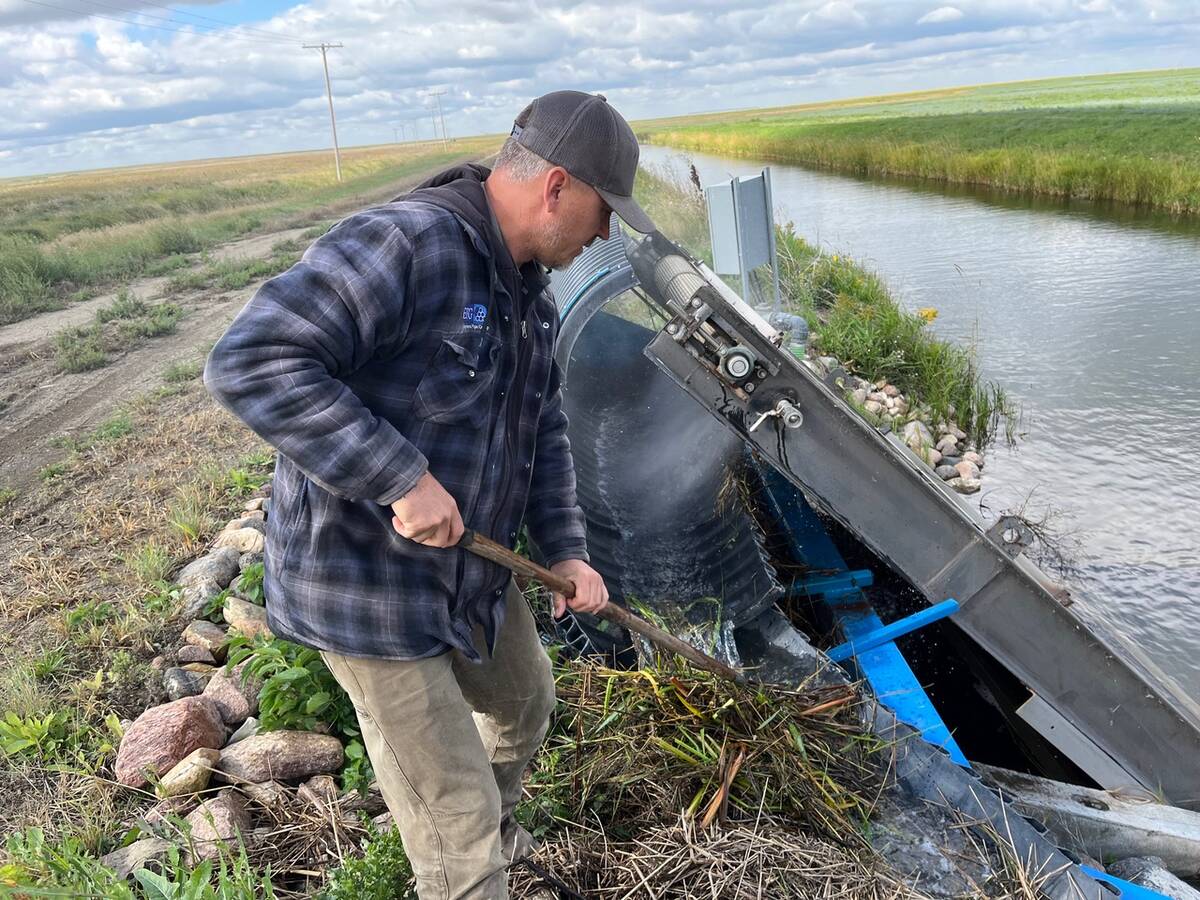RENO, Nevada Ñ Canada and the United States are embroiled in a wheat war that has nothing to do with hard red spring wheat or durum.
The two countries are in a marketing struggle over a relatively new class of North American wheat and Canada is emerging as a decisive victor in that battle.
Ron Stoddard, chair of the U.S. Wheat Associates’ hard white wheat marketing group, told producers attending the North American Grain Congress that in the 14 years since hard white became its own class of wheat, production has remained well below one million acres, which is a big disappointment for the industry.
Read Also

Saskatchewan farmer uses tile drainage to manage water
The integration of both irrigation and tile drainage results in higher yields, water efficiency, improved soils and less nutrient runoff, says one producer.
While the crop is floundering in the U.S., it is flourishing north of the 49th parallel, said Stoddard.
In three years, Canada has increased its seeding from nothing to 600,000 acres.
There is enough seed available to plant 1.2 million acres of hard white wheat in Canada in 2005 and the Canadian Wheat Board has an identity preservation program in place for Snowbird and Kanata varieties, which pays growers a $2.50 per tonne premium if they harvest No. 3 or better.
With 95 percent of its crop devoted to hard white wheat varieties, Australia has a stranglehold on many markets but Canada is making inroads in places like Malaysia at the expense of the U.S.
“Canada is targeting the very customers who have been encouraging us over the past decade to develop a hard white wheat industry,” said Stoddard.
“We have done a tremendous job of promoting hard white wheat to our customers only to sit back and watch Canada and Australia provide the wheat.”
He doesn’t want the U.S. to continue falling behind in the production and export of what has become a highly sought after class of wheat.
Hard white wheat provides millers with a higher extraction rate than its main competitor, hard red winter wheat, and it delivers better quality noodles and steamed breads.
“In the Asian market they are very colour sensitive. They want their noodles to be white and they want their breads to be white and they have much more success achieving that with hard white wheat,” said Stoddard.
The U.S. wheat industry has spent millions of dollars cultivating demand for the class of wheat but growers have been reluctant to chase that demand.
One of the biggest obstacles is the generations-old habit of growing hard red winter wheat in key wheat growing states like Colorado, Kansas, Nebraska, Oklahoma and Texas.
In many of those states a switch would mean summerfallowing fields for a couple of years to ensure there were no volunteer hard red winter wheat plants.
“It’s just a risk that they’re not willing to accept at this point,” said Stoddard.
To address that financial concern the federal government launched a three-year incentive program that expires at the end of 2005, which pays growers 20 cents per bushel to a maximum of 60 bu. per acre on No. 2 or better product. There is a $2 per acre bonus if growers plant certified seed.
The program has a $20 million cap, which could present a problem for the coming crop. Stoddard estimates there is $4.2 million remaining for 2005 but the anticipated need will be $8.5 million, which means there will be cuts to the program unless additional funding is secured from the federal government.
In addition to financial concerns, producers have faced agronomic challenges growing hard white wheat. Earlier varieties did not yield as well as hard red winter wheat. That problem has been addressed but a new one has arisen. Abnormal rainfall led to significant sprouting damage in the 2004-05 crop.
The problems extend beyond the farm. The grain trade is reluctant to handle the class of wheat due to the uncertainty of being able to sell it at a premium sufficient enough to cover the additional costs of handling and segregation.
But there are also encouraging signs for the industry.
ConAgra is expanding its hard white wheat program into Texas, Montana and North Dakota and forecasts that within the next 10 years, 50 percent of the wheat production in Kansas, Colorado and Nebraska will be hard white wheat. Other companies are exploring similar contract programs in western Nebraska and South Dakota.
There are indications that members of the U.S. congress may be willing to extend the incentive program for another three years.
U.S. white wheat promoters were pleased to learn in a survey that American growers intend to plant 854,000 acres of the crop in 2005, up eight percent from 2004. Analysts were expecting a big step backward to 621,500 acres because of the sprouting damage issue.
Assuming average yields, 2005-06 production is expected to come in at a little less than one million tonnes, which is still only half of what the industry feels is required to be considered a successful class of wheat. That is why the next few years represent a critical crossroads for hard white wheat in America.
“It’s time we fish or cut bait,” said Stoddard. “Are we going to chase this another 14 years?”

















